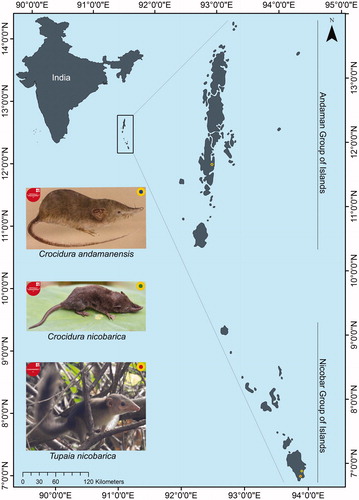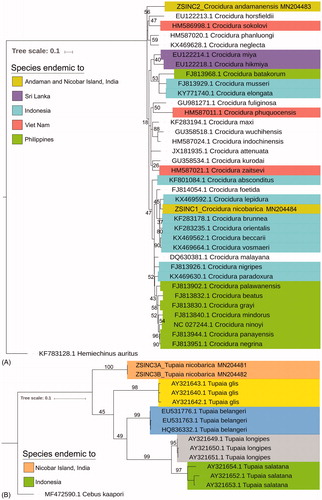Figures & data
Figure 1. Map showing the geographical locations of Andaman and Nicobar group of Islands in India and the collection locality of the endemic and threatened shrew and treeshrew species. The drawing of C. andamanensis was obtained from the published book of ZSI, MoEF&CC. The photograph of C. nicobarica was captured by the third author M.K., and T. nicobarica by G. Gokulakrishnan, ANRC, ZSI.

Figure 2. The maximum-likelihood (ML) tree distinctly discriminated the studied shrew (A) and treeshrew species (B) with other South and Southeast Asian congeners. The database sequences of a hedgehog, H. auritus, and a capuchin monkey, C. kaapori were used to build the tree of Crocidura shrew and Tupaia treeshrew, respectively.

